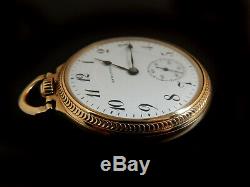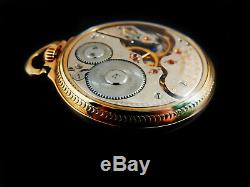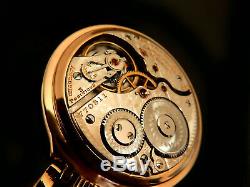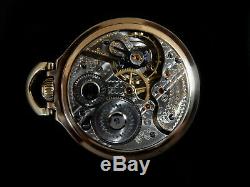
- Home
- Brand
- Antique (6)
- Ball (87)
- Ball Hamilton (25)
- Ball-hamilton (17)
- Elgin (16)
- Elgin Father Time (5)
- Hamilton (4288)
- Hamilton 922-b (3)
- Hamilton 940 (14)
- Hamilton 941 (5)
- Hamilton 992-b (6)
- Hamilton 992b (10)
- Hamilton Gct 4992b (4)
- Hamilton Watch Co (8)
- Hamilton Watch Co. (14)
- Illinois (9)
- Pocket Watch Case (4)
- Wadsworth (6)
- Waltham (8)
- Waltham Vanguard (4)
- ... (1066)
- Closure
- Ball Hamilton 999-b (2)
- Display Case (5)
- Double Half Hunter (2)
- Double Hunter (35)
- Full Hunter (109)
- Half Hunter (34)
- Hamilton 992 (5)
- Hamilton 992 Elinvar (2)
- Hamilton 992-b (16)
- Hunter (4)
- Hunting (5)
- Hunting Case (2)
- Open Face (2165)
- Open Face Case (4)
- Open Face Display (2)
- Screw Back And Bezel (3)
- Swing Out (2)
- Unknown (2)
- ... (3206)
- Department
- Movement
- 16 Size (4)
- 17 Jewels (2)
- 22 Jewels Gov 4992b (24)
- 950b (3)
- 992b (12)
- Dual Time Zone (2)
- Lever (2)
- Lever Set (4)
- Manual (3)
- Manual Wind (19)
- Manual Winding (3)
- Mechanical (50)
- Mechanical (manual) (1205)
- Mechanical 21 Jewel (2)
- Mechanical Wind (14)
- Navigational (4)
- Openface (3)
- Quartz (8)
- Rail Road Grade (84)
- 993 (2)
- ... (4155)
- Type
- Vintage
Mega Rare Antique Railroad 21j Hamilton 992 Pocket Watch Salesman Display Case








Up for sale is a Rare Beautiful Antique Railroad 21J 16s Hamilton 992 Pocket Watch in Amazing Salesman Gold Filled Case. The movement has a serial number 770611 which dates it to be manufactured in 1910. The Double Sunk Glass Enamel Dial, Hands and Glass Crystal are in immaculate mint condition please see the pictures. The case is in Excellent Mint condition. The Watch size is 18 with 21 Ruby Jewels in Gold settings, Gold balance screws. It's Stem Wind and Lever set, Adjusted to 5. The watch was recently serviced, running STRONG and keeping an excellent time. Please look closely at the pictures as they part of the description. Thank You and Good Luck!!! Brief History: Hamilton Watch Company. Hamilton factory: Using a precision scale to fit balance screws to a balance. Hamilton Watch Company: Early Days. In 1874, General Ulysses S. Grant was President of the United States and Conestoga wagons creaked their way along the Lancaster Turnpike, as citizens heeded the call of Horace Greely to Go West. Another form of pioneer was building a factory in the pastoral community of Lancaster, Pennsylvania. The Adams and Perry Watch Company was built right beside the turnpike.
Its founders possessed a good combination of skills: Mr. Perry was a watch designer, and Mr. Adams was an organizer and promoter. They brought skilled watchmakers to Lancaster and began production in 1875. Like so many infant industries, Adams and Perry did not have enough capital to market their product.
The Lancaster Watch Company continued to suffer growing pains and was reorganized again in 1884, this time as the Keystone Standard Watch Company. Nevertheless, the financial problems persisted until 1892. In that year, the Hamilton Watch Company came into existence as a result of yet another reorganization. The name, Hamilton, was selected to honor Andrew Hamilton, original owner of the Lancaster site on which the factory was situated.
Hamilton was granted the land by William Penn's heirs and is credited with founding the city of Lancaster with his son James. Hamilton Watch was founded by merging Keystone with the Aurora (Illinois) Watch Company. Aurora machinery was moved to Lancaster in summer of 1892. Among the leading business and professional men of Lancaster who founded the Hamilton Watch Company were J. Franklin, John Sener, John C.
Sener, James Shand, Peter T. Cain of Springfield, Massachusetts represented the Aurora interests.
The Hamilton Watch Company was founded in 1892 and set out to serve the railroad market with accurate timepieces. The rugged, precision watch that Hamilton produced became a favorite among railroad watch inspectors and personnel. In fulfilling the railroads' requirements for accuracy, it also filled the needs of the general public for a timepiece of high quality. By the turn of the century it came to be known as Hamilton The Railroad Timekeeper of America. Miller, vice-president, left Lancaster to become its general manager. The Hamilton-Sangamo Corporation was formed in 1929 by the Hamilton Watch Company and the Sangamo Electric Company of Springfield, Illinois to market a new line of electric clocks. Howard Watch Company were acquired by Hamilton in 1931. Although never extremely active in the manufacture of "Howard" watches, Hamilton has produced small quantities under this brand name. American soldiers during World War I preferred the smaller size and convenience of the wristwatch to the "old-fashioned" pocket watches. This trend caused a major shift in American watch production, with a new emphasis on producing wristwatch models for both men and women. During World War II, Hamilton ramped-up production of several models of chronometer to meet the US Armed Forces (particularly the US Navy's) need for an extremely accurate timepiece which could be used for navigation at sea. Prior to WWII, such highly accurate instruments were only produced abroad. The first Hamilton chronometers were delivered to the Navy in February 1942, and at their peak Hamilton was making 500 chronometers per month! Hamilton Model 23 Military Chronograph was widely used during WWII as a navigator's "stop-watch". Based on the super-reliable 992B with Elinvar hairspring and mono-metallic balance, the Mod 23 adds a chronograph mechanism, making it one of the most complicated watches produced by Hamilton. Hamilton has always been on the forefront of horological innovation.The Elinvar hairspring was patented in 1931 and used in all movements thereafter. The name Elinvar was derived from the term "Elasticity Invariable" and was the first alloy to resist the changes in elasticity that occur with changes in temperature. In January 1957, Hamilton introduced the world's first electric wristwatch, a breakthrough for the industry and the first basic change in portable timekeeping since the early 16th century.
Powered by a tiny 1.5 volt battery guaranteed to run the watch for more than a year, the new watch completely eliminated the need for a mainspring. The electric current necessary to operate one 100-watt bulb for one minute could run an electric watch for 20 years. The Hamilton Electrics featured not only a revolutionary movement design, but also were known for their avant garde styling, making them among the most collectible watches today.Also during the mid-fifties Hamilton embarked on a program of expansion and diversification. As a result, the company produced watches under three brand names Hamilton, Vantage and Buren in six plants in this country and abroad, manufactured sterling and plated silverware, fabricated and processed rare and exotic metals, and produced mechanical and electronic measuring devices and components. Hamilton also produced rocket fuel alloys, special metals for the Apollo program, missile timers and safety and arming devices for military applications. Hamilton continued to produce some of the finest American watches until 1969, earning them the distinction of being the only American watch company to survive global competition will into the 20th century.
They truly represent the pinnacle of American watchmaking. The item "Mega Rare Antique Railroad 21j Hamilton 992 Pocket Watch Salesman Display Case" is in sale since Sunday, February 16, 2020. This item is in the category "Jewelry & Watches\Watches, Parts & Accessories\Pocket Watches\Antique". The seller is "ticker-ticker" and is located in Mount Arlington, New Jersey. This item can be shipped worldwide.
- Number of Jewels: 21 Jewels
- Country/Region of Manufacture: United States
- Style: Railroad, Luxury
- Pocket Watch Size: 16
- Movement: Mechanical: Hand-winding
- Country Made: USA
- Year of Manufacture: 1910-1919
- Features: Easy To Read
- Closure: Open Face
- Brand: Hamilton
- Serial Number: 770611

